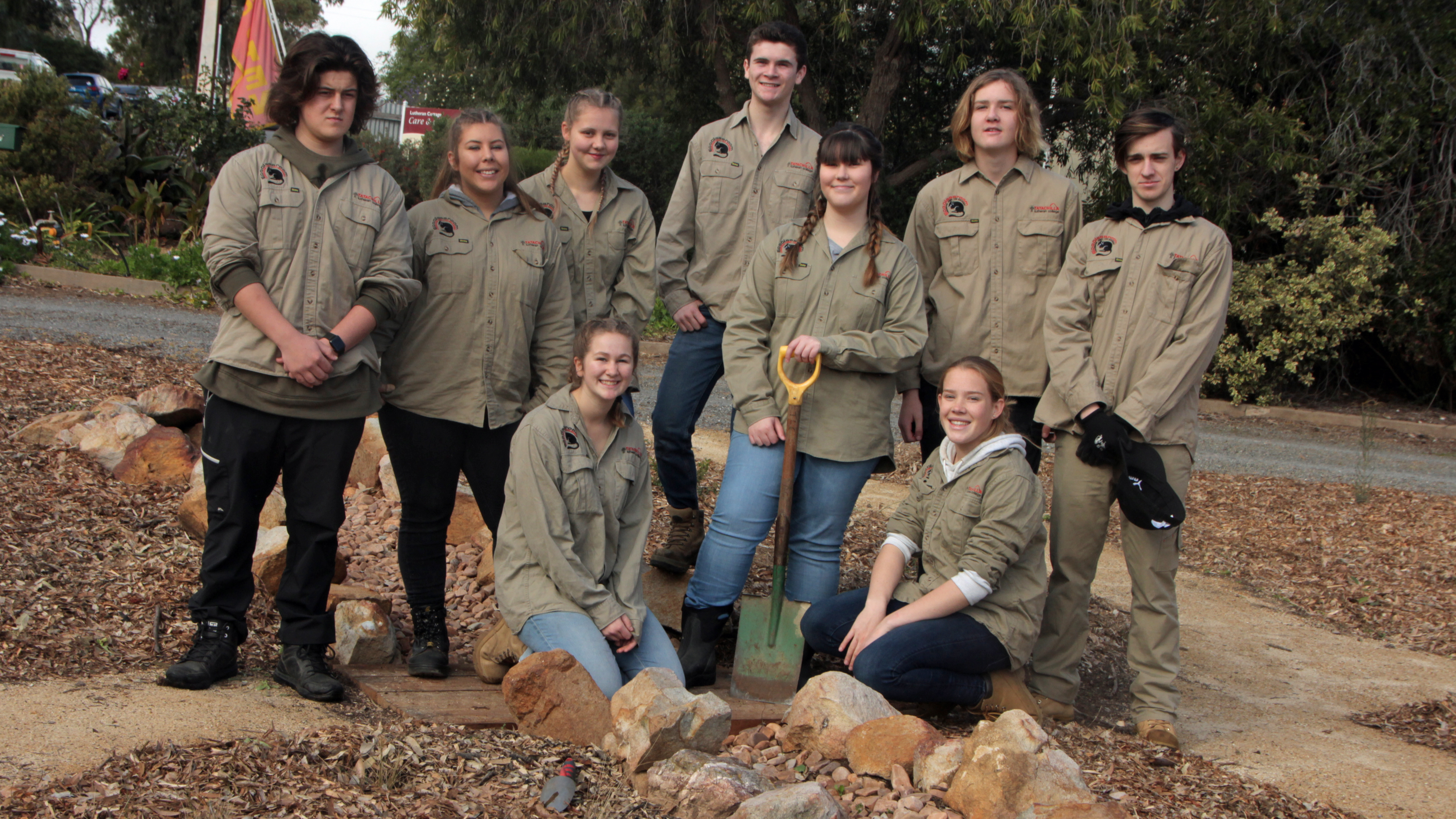Church and College Collaborate to Create St Pauls Walk
The front garden of St Paul’s Lutheran Church, McLaren Vale, is sprouting seedlings and a brand new look, thanks to the students of Tatachilla Lutheran College’s Conservation and Land Management course.
Ten students, led by project leaders Skye Dunn and Mitchell Livingston, have collaborated with St Paul’s as part of their coursework, which requires them to landscape an area.
St Paul’s Pastor Tim Castle-Schmidt, a former teacher at the college, knew of the program and recognised an opportunity to connect with the local school.
“We’ve tended to think of schools as a natural mission space for us, but I don’t think it’s quite that simple,” he says. “We actually need to think ‘how can we work together to achieve mutually beneficial outcomes?’”
Beyond simply refreshing the church entrance, Castle-Schmidt hopes St Paul’s Walk is a place for the community to meditate, spend time with God and step out of their busy lives.
“Finding or making the time to do those things is not easy, and so if you’ve got a nice setting … hopefully that will invite people in.”
The students designed the garden, considering factors such as plant species, growth patterns and accessibility, and completed planting at the end of June.
St Paul’s members laid down mulch the following week, while Tatachilla’s Doorways 2 Construction program created sleeper benches and platforms. Castle-Schmidt hopes these platforms will serve as an ongoing gallery space to partner with the Tatachilla art department, as well as local artists.
Course Trainer Karen Lawrence believes the skills and knowledge gleaned from hands-on, environmental learning not only teaches students to think independently, but also prepares them for jobs that will arise in the future.
“When kids are empowered with that sort of information, they’re able to have a closer ownership with the country and are also able to work at a more personal level, like ‘I’m doing this because I know it’s the right thing to do, and because I’ve got a vested interest to see how this is going to improve.’”
As part of the workplace-simulated course, the group has also created an extension to Tatachilla’s EcoClassroom to house bandicoots, visited Arid Recovery to work on releasing and monitoring endangered species, and carried out plantings in several conservation parks.
“There’s lots of things that all come together to help the kids say, ‘oh wow, this is pretty awesome. I didn’t know that there was a job like this available.’ Well, yeah, there is!”
Castle-Schmidt encourages other churches to think about how they can “use the talents and the skills of schools, as well as realising that engaging that way benefits their learning as well.”
“It’s good for the kids, it’s good for the school, and good for the community,” Lawrence says.
READ MORE STORIES ABOUT congregations, schools

